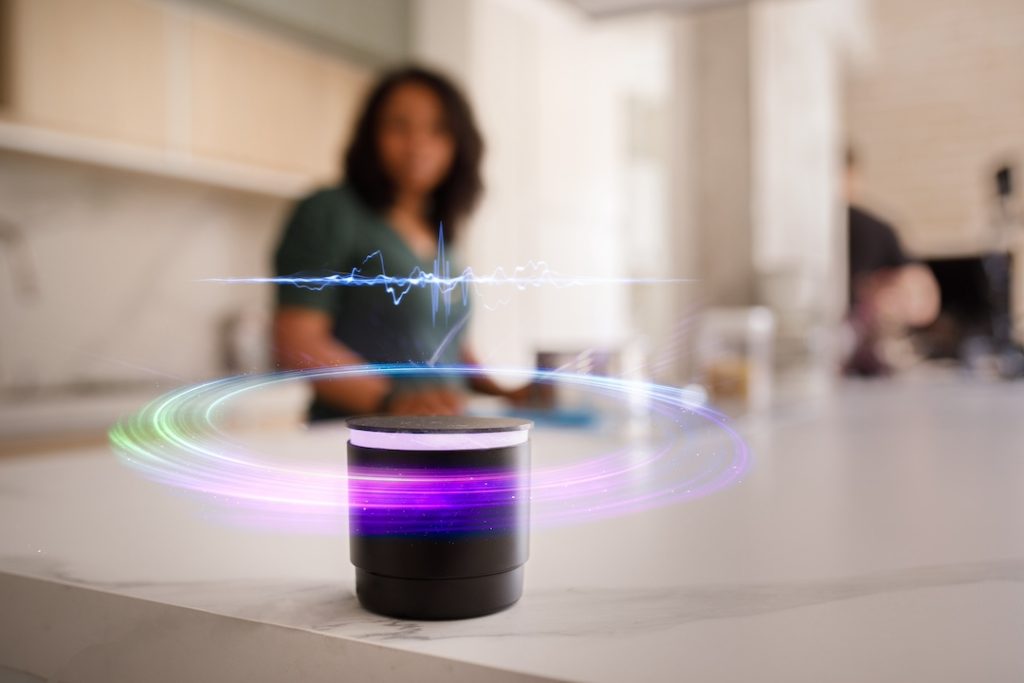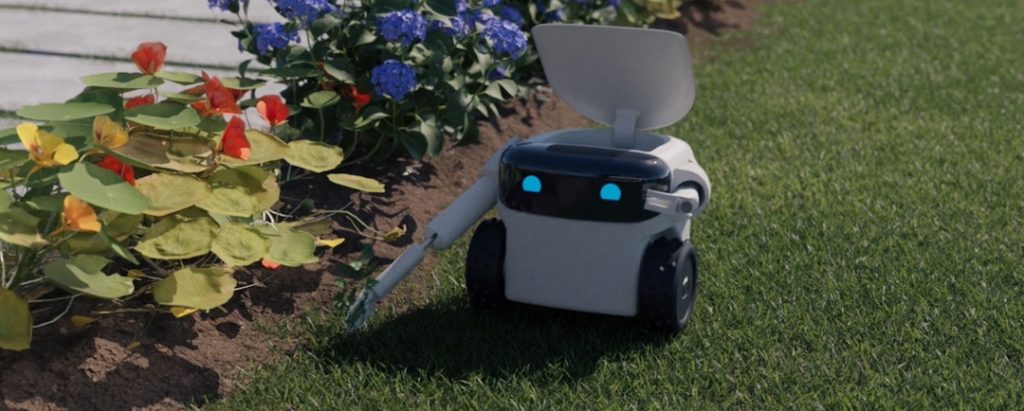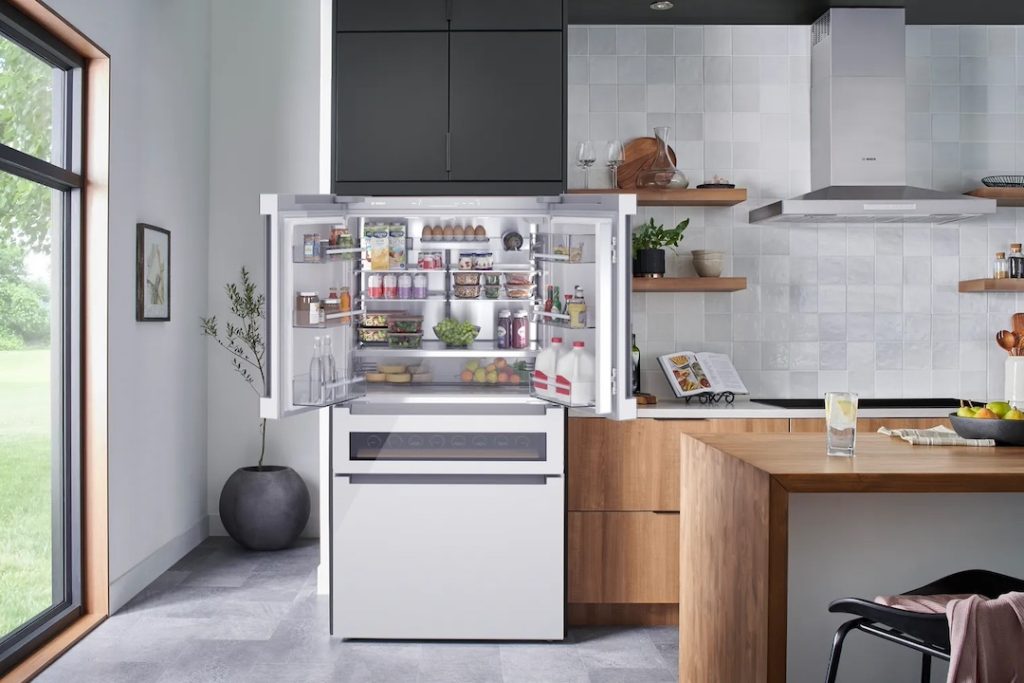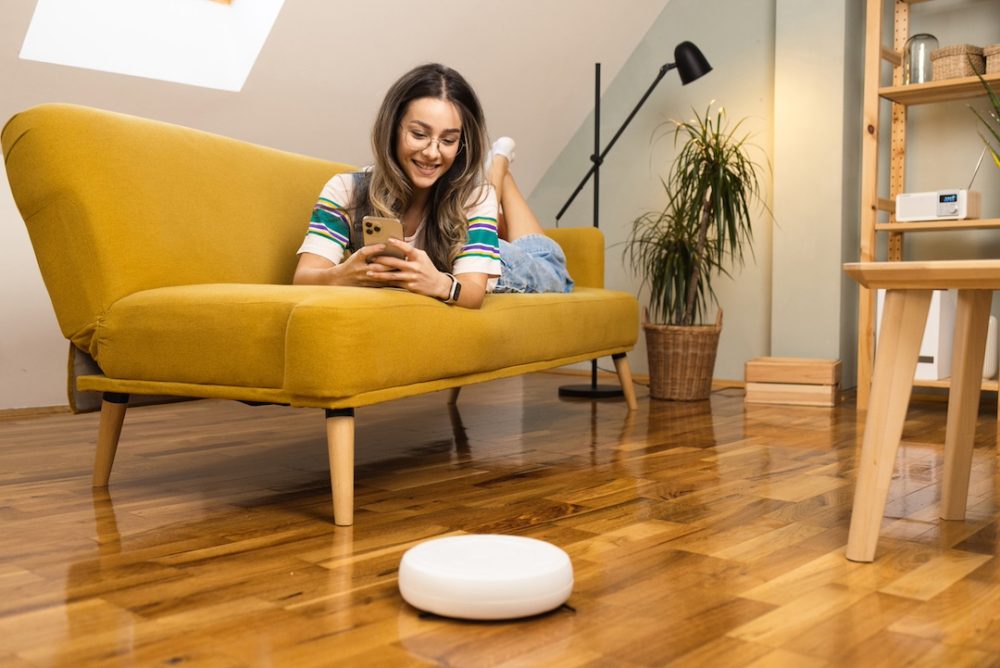When it comes to outfitting a home, technology has become as important as interior design. Connected home products have become common in many U.S. households. Statista estimates that there are approximately 63.43 million smart homes in the U.S., and this number is forecasted to increase by 30.2 million by 2027.
The growing number of households adopting smart technology means that consumers are looking for ways to make their homes more connected. But with so many connected products to choose from, consumers may be flummoxed with where to start.
Luckily, that is what trends are for. 2024 is set to be another great year for connected products. That same Statista study estimates that the number of smart homes in the U.S. will increase to 69.91 million. So, Dealerscope has gathered some of the trends that will overtake the connected home products market in 2024 to give retailers guidance on what to recommend to consumers in such an expanding market.
Putting the AI in Voice Automation
According to Statista, the number of people in the U.S. who have voice assistants in 2023 comes out to approximately 146 million. Virtual assistants like Amazon’s Alexa, Apple’s Siri, and Google Assistant have been members of the smart household for around a decade. However, these products have been limited in their capabilities due to their status as task-oriented command-and-control systems. “These can understand a finite list of questions and requests like ‘What’s the weather in New York City?’ or ‘Turn on the bedroom lights,’” explains Brian X. Chen, Nico Grant, and Karen Weise, in a New York Times article. Any request that is outside of the voice assistant’s code parameters? “The bot simply says it can’t help,” the article continues.

Voice assistants, however, are becoming more sophisticated thanks to parallel advances in AI. Virtual assistants like Siri, Alexa, and Google Assistant have always used AI in a command-and-control capacity, but advances in the generative AI used for chatbots will take voice-activated virtual assistants to the next level in the near future. OpenAI, the maker of AI text chatbot ChatGPT, announced on September 25 that it was rolling out voice and image capabilities. According to New York Times’s Kevin Roose, this update is “part of an industrywide push toward so-called multimodal AI systems that can handle text, photos, videos and whatever else a user might decide to throw at them,” rather than a set of prompts. OpenAI explains that the ChatGPT voice feature is “powered by a new text-to-speech model, capable of generating human-like audio from just text and a few seconds of sample speech” from its open-source speech-recognition feature, Whisper.
Roose tested the new voice and image capabilities of ChatGPT and, though there were a few technical hiccups that will likely be ironed out during the beta testing, he found it useful and appealing. The voice feature felt more natural and fluid than past virtual assistants, providing the user with “a more intimate experience than reading its responses on a screen.” As of right now, the ChatGPT voice feature is only available to paying Plus and Enterprise users, but this technology is certainly the future of virtual assistants.
Rise of the Robots
If IFA Berlin 2023 showed us anything, it is that robots have become increasingly integrated into our homes and everyday lives. The House of Robots exhibition at the renowned European consumer electronics trade show demonstrated how robots can serve a variety of functions and in a variety of industries, from healthcare with EnchantedTools’s Mirokai, to customer service with Yanu’s bartending robot.

The House of Robots also featured many robots and specifically examined how these devices make their way into the home. EEVE demoed its Willow X robot, which can be programmed to perform a variety of outdoor maintenance tasks like mowing and weeding lawns and sweeping patios, with the help of AI. Willow X can also be controlled via a desktop application, which allows users to add commands and configure Willow X’s settings with ready-made extensions.
Roborock also debuted new robotic products at the House of Robots, such as the Q5 Pro series and Q8 Max series of robot vacuums. The Q5 Pro features smart navigation that uses LiDAR to create detailed, accurate maps that direct the vacuum to clean the home in the most efficient way possible. The Q8 Max series has smart navigation as well as obstacle avoidance technology that detects and avoids objects on the floor. Both vacuums can be assigned customized cleaning routines for specific rooms and times through a dedicated app. The Q5 Pro series and Q8 Max series also can be connected to the smart home ecosystems Amazon Alexa, Google Home, and Apple Siri for full control.
Shh…Quiet Appliances at Work
Smart capabilities in appliances have become the norm for many consumers because of how they simplify daily routines. Statista projects that the smart appliances market in the U.S. will have a compound annual growth rate (CAGR) of 10.66 percent between 2022 and 2028, which is a projected market volume of $16.5 billion by 2028. Even though smart appliances have been on an upward trajectory in terms of adoption and popularity for several years now, there is a new side to this trend that is becoming more appealing to consumers: quiet appliances.
The National Kitchen & Bath Association (NKBA) recently released its 2024 Design Trends Report “highlighting top trends in kitchen design over the next three years and featuring emerging categories and shifts in products, color, materials and space.” The report detailed that 65 percent of designers indicate an increasing number of their customers are favoring quiet dishwashers.

While appliances are essential for every home, they can sometimes be noisy. Running refrigerators and pro-wash functions on dishwashers and washing machines can fill a house with unnecessary humming. In 2024, it is projected that consumers will turn away from these loud appliances and toward appliances that get the job done with little fuss.
Smart appliances such as the GE Profile dishwasher combine smart capability with quiet efficiency. The dishwasher has built-in Wi-Fi powered by the GE Profile SmartHQ app, allowing users to monitor performance, check the status of a wash cycle, and reorder detergent from the app. Plus, it generates only 39 dBA when in operation, which is just below the loudness level of a library, according to IAC Acoustics. The ultimate quiet smart appliance should also have features that prolong its usability without a consumer calling for maintenance. Luckily, the GE Profile dishwasher has the Leak Detect and Active Flood Protect functions. These features alert the user when the water sensor detects 1.5 oz of water beneath the unit’s pan. The GE Profile dishwasher retails for $1,221.
Health-Focused Home Products for the Win
Health and wellness have been trends in the public consciousness for a good couple of years now, so it only follows that they make their way into the connected home. Electronics and appliances that can help maintain a healthy environment in the home are becoming more favored by consumers.
One feature that is charted to become popular among consumers in 2024 is smart refrigeration. According to Forbes, “food preservation has increased in homeowner importance as food prices continue to soar, concerns about ethical and sustainability issues surrounding waste grow, and power grids fail due to extreme weather or other issues.” Smart refrigeration is a method of food preservation that helps prolong the quality of food by measuring and maintaining temperature and humidity levels within a refrigerator.

Smart refrigeration is already making its appearance in appliances. Bosch’s 36-inch 800 Series French Door Bottom Mount Refrigerator, Glass Door is a sleek, smart refrigerator that pulls double duty by maintaining the freshness of produce while chilling beverages in the temperature-adjustable refreshment center. Users can control various settings from the Home Connect app by Bosch, including customizing the temperature and humidity of the VitaFreshPro drawer and the lighting.
Air quality monitors (AQMs) are also becoming more popular in smart homes looking to track the health of their home environment. According to the American Lung Association’s 2023 State of the Air Report, 36 percent of Americans (119.6 million people) live in places with “failing grades for unhealthy levels of ozone or particle pollution.” Indoor air is much more concentrated than outdoor air, which makes monitoring levels of CO2, ozone (O3), and particulate matter paramount to ensuring the respiratory health of household members, especially immunocompromised people.
The Alen AQM allows users to monitor the air quality throughout different rooms in the home from a smartphone. The AQM connects with any Alen air purifier in a home and offers users historical trends and real-time air quality reports for each room. Alen air quality monitors, such as the BreatheSmart 75i, are Wi-Fi enabled and controllable via smartphone. The BreatheSmart 75i cleans up to 1,300 sq. ft. every 30 minutes, auto-adjusting its fan speed based on air quality conditions. With an H13 HEPA filter, the BreatheSmart 75i can remove up to 99.9 percent of dust, allergens, and other harmful pollutants like volatile organic compounds (VOCs). The mitigation and removal of such materials and compounds from the air helps alleviate asthma symptoms, improve sleep quality, and eliminate smoke odor.
Improving Life Quality
Connected home products are not a new innovation by any stretch, but consistent innovation in the way of AI and the Internet of Things (IoT) is fundamentally changing how consumers want to implement technology into their lives.
In 2024, consumers are looking for connected home products that not only enhance their daily routines but improve their life quality. AI is becoming more intelligent in the way it can communicate with people on a personal level, and robots are actively learning the corners and crevices of a home to make it appear at its best. Consumers want smart appliances that are unobtrusive in terms of sound, performance, and longevity. Food preservation and monitoring air quality have become practical features of many smart appliances and devices that consumers need to make their households perform to the best of their abilities.
So, when it comes to connected home products in 2024, give consumers products that will revamp their lifestyles and routines, but also ones that will improve their life quality overall.















